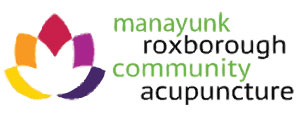Shiatsu, Tui Na, and Gua Sha are forms of Asian body work. Shiatsu was originally developed in Japan, while Tui Na and Gua Sha were developed in China. They are different from a typical massage in that they involve using massage to manipulate specific acupuncture points and meridians. While Tui Na and Shiatsu are commonly used to help diagnose patients, they can also be very effective primary forms of treatment. They have to ability to treat an array of different ailments from pain to many different internal disorders. Gua Sha is most commonly used to treat stubborn next, shoulder, and back pain, but can also be used to treat plant fascia, IT band tightness, tennis elbow, and colds.
Tui Na and Shiatsu are great alternatives to a traditional massages because they are based off of Acupuncture theory and view the body in a synergistic way. This style of massage allows for a productive and effective treatment.
Feeling good during a massage is nice, but making sure you are getting better is a must. Shiatsu, Tui Na, and Gua Sha allow for this long lasting therapeutic effect.
Tui Na
Tui na is a Chinese medical massage usually done over one’s clothing. It employs qi gong and martial arts techniques to unblock areas of constriction using a combination of hand techniques, traction and acupressure. Scott O-Brien is our in-house Tui Na expert. Learn more about Scott here.
Shiatsu
Shiatsu is a form of therapy of Japanese origin based on the same principles as acupuncture, in which pressure is applied to certain points on the body using the hands.
Gua Sha
Gua Sha releases unhealthy elements from injured areas and stimulates blood flow and healing. Gua sha is sometimes referred to as “spooning” or “coining” and, it has also been given the descriptive French name, tribo-effleurage. Gua Sha is a traditional Chinese medical treatment in which the skin is scraped to produce light bruising. Although the technique causes some light bruising, it does not typically hurt afterward and patients report immediate relief from pain and muscle tension.
Any of our practitioners can do Gua Sha as an adjunct to acupuncture or as a stand alone treatment. Scott O-Brien is our in-house Tui Na expert. Learn more about Scott here.
